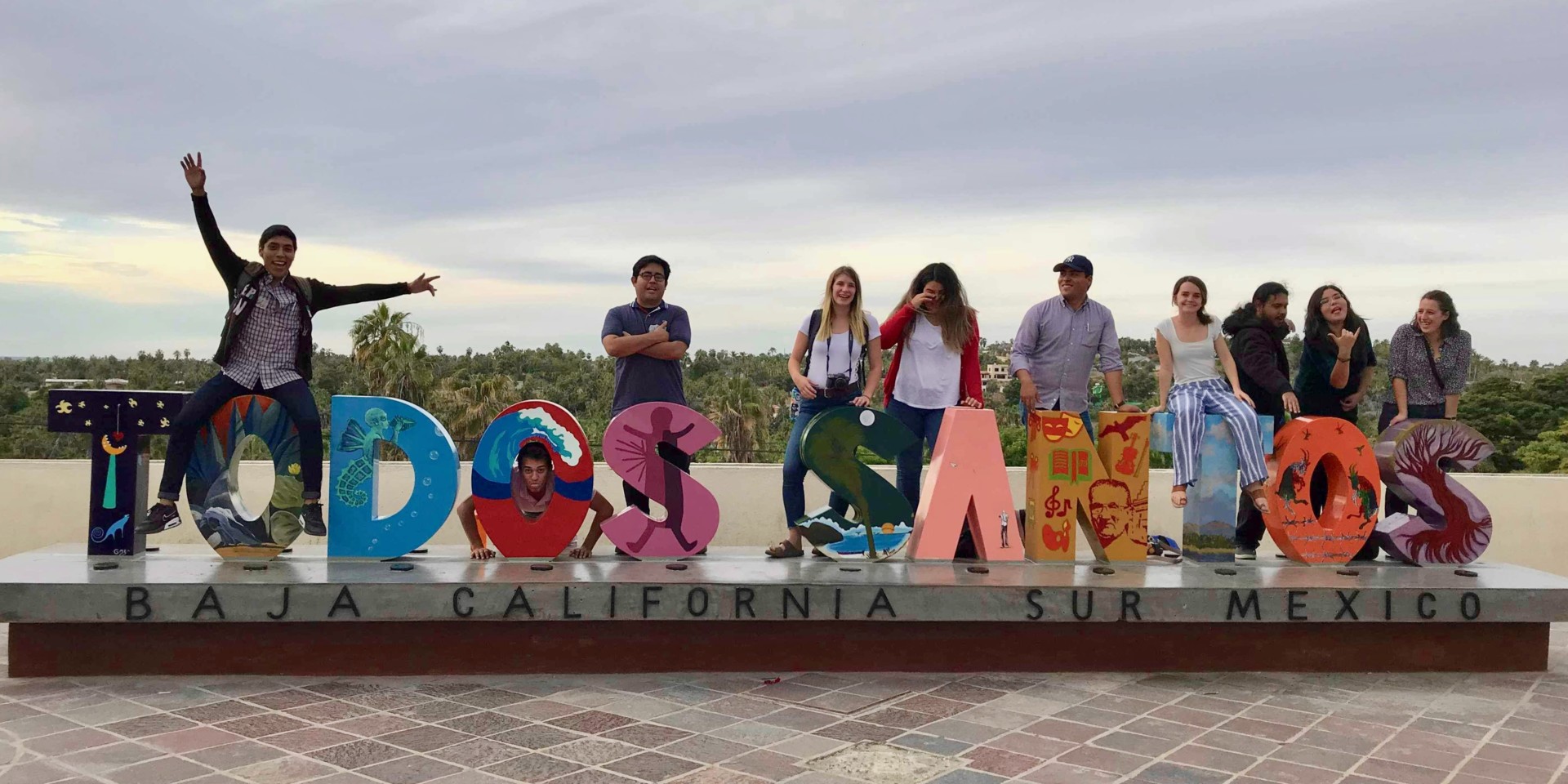Photo credit: Amanda Nagel
Para leer en español, haga clic aquí
“In preparing young leaders to meet the challenges surrounding water they will inherit, it is imperative to offer opportunities to learn from those currently working on the front lines,” said Michael Buttram, program coordinator for Alternative Breaks, a program of CSU’s Office of Student Leadership, Involvement and Community Engagement (SLiCE).
Buttram leads the annual Global Leadership Experience, a week-long culturally immersive and collaborative program at the CSU Todos Santos Center in Baja California Sur, Mexico. Now in its second year, the GLE program offers a platform for CSU and Mexican university students to exchange knowledge and broaden cultural understanding around global issues.
In 2018, SLiCE partnered with the President’s Leadership Program to develop the program’s core focus on global leadership through an exploration of the values and influences that drive societies’ decisions around the use of water.
Know before you go
Buttram and Stephanie “Mo” Moreira, assistant director of curricular leadership for PLP, began brainstorming their approach to the leadership program during the summer of 2018, and took a pre-program trip to Todos Santos to cultivate partnerships with local universities and nonprofits.
Upon returning to CSU’s campus in Fort Collins, Buttram and Moreira led the 13-student cohort through a series of meetings to familiarize them with real-world water issues and expose them to creative strategies being utilized to address them.
They visited the Horsetooth Area Information Center to hear from representatives from the Fort Collins water department and the Coalition for the Poudre River Watershed, and met with Reagan Waskom, director of the Colorado Water Institute at CSU, to improve their understanding of water issues in Colorado and the West.
“Both presentations were incredibly informative and gave us some good fodder to chew on as we prepared for the trip,” said Buttram.
Water connects our world
The program allowed CSU students to engage with Mexican students studying water practices at the Universidad Autónoma de Baja California Sur and the Instituto Technologico de La Paz.
“Our world is always connected, whether through being young college students, our thirst for water, or physically through special spots like the CSU Todos Santos Center,” said Mahira Ganster, 21, a CSU senior double-majoring in psychology and Spanish. “It’s rare that we can explore this connection between one another, and the GLE is one of those opportunities.”
Professors from both universities teamed up with local experts to deliver bilingual workshops on subjects including unequal water distribution in La Paz, efficient water use in arid zones, and hydrogeological conditions in Baja California Sur.
The next day, the group ventured to the region’s primary water source: Sierra la Laguna Biosphere Reserve. Nearly all fresh water in BCS is derived from rainfall over the reserve, which charges the aquifers from La Paz to Todos Santos and beyond.
Officials from the Comisión Nacional de Áreas Naturales Protegidas, the Mexican equivalent of the U.S. National Park Service, guided them through the reserve alongside beekeepers and ranchers who have made their living from the land for generations.
“The trip to Sierra La Laguna was an incredible treat,” said Buttram. “The biodiversity and unique ecosystems that occur at varying elevations of this Mexican treasure wowed us all.”
Diving deep into water issues
The six-day experience culminated with an intensive “Water Dialogues (Dialogos del Agua)” session, “an opportunity for young leaders to explore the urgent global need to understand and utilize our most precious natural resource wisely.”
Buttram described the exercise as a venue for student participants and local leaders to convene and share their knowledge and experience with multinational students learning how to confront water-related challenges with creative and informed solutions. Water scarcity was highlighted as an issue faced by BCS residents and Coloradans alike.
“We utilized a World Café style conversation, allowing mixed groups of Mexican and U.S. students to think deeply about the economic, environmental, and philosophical positions on water use and resourcing in both countries and around the world,” Buttram explained.
Students deliberated the question of water as a human right or a marketable commodity, and explored possible ways of ensuring just and equitable water access in today’s markets and governments.
Dominick Quintana, 20, a CSU junior majoring in political science, said the experience made him more aware of water scarcity, a sentiment shared by many of the participants. For CSU junior psychology major Alyssa Drennan, 21, the program’s most notable takeaway was realizing she was part of something much greater than herself.
“Through this opportunity to learn from and collaborate with a new culture on the issue of water scarcity I learned that yes, we have differences, but we have many more similarities,” she said.
“Being a good global citizen and working together on a common issue can really strengthen the possibility of any change, worldwide.”

About the Colorado State University Todos Santos Center
Located in Baja California Sur, Mexico, CSU Todos Santos Center serves as the University’s international hub, providing research and educational opportunities in alignment with existing University curricula.
Advancing CSU’s mission of teaching, research, service, and outreach, the Center collaborates with Mexican universities and organizations, and provides workshops and programs for visitors and local residents.
CSU’s vision in Todos Santos is to cultivate generations of global citizens and to partner in the creation of thriving communities through experiential learning and the exchange of knowledge.
For additional information, visit todossantos.colostate.edu.